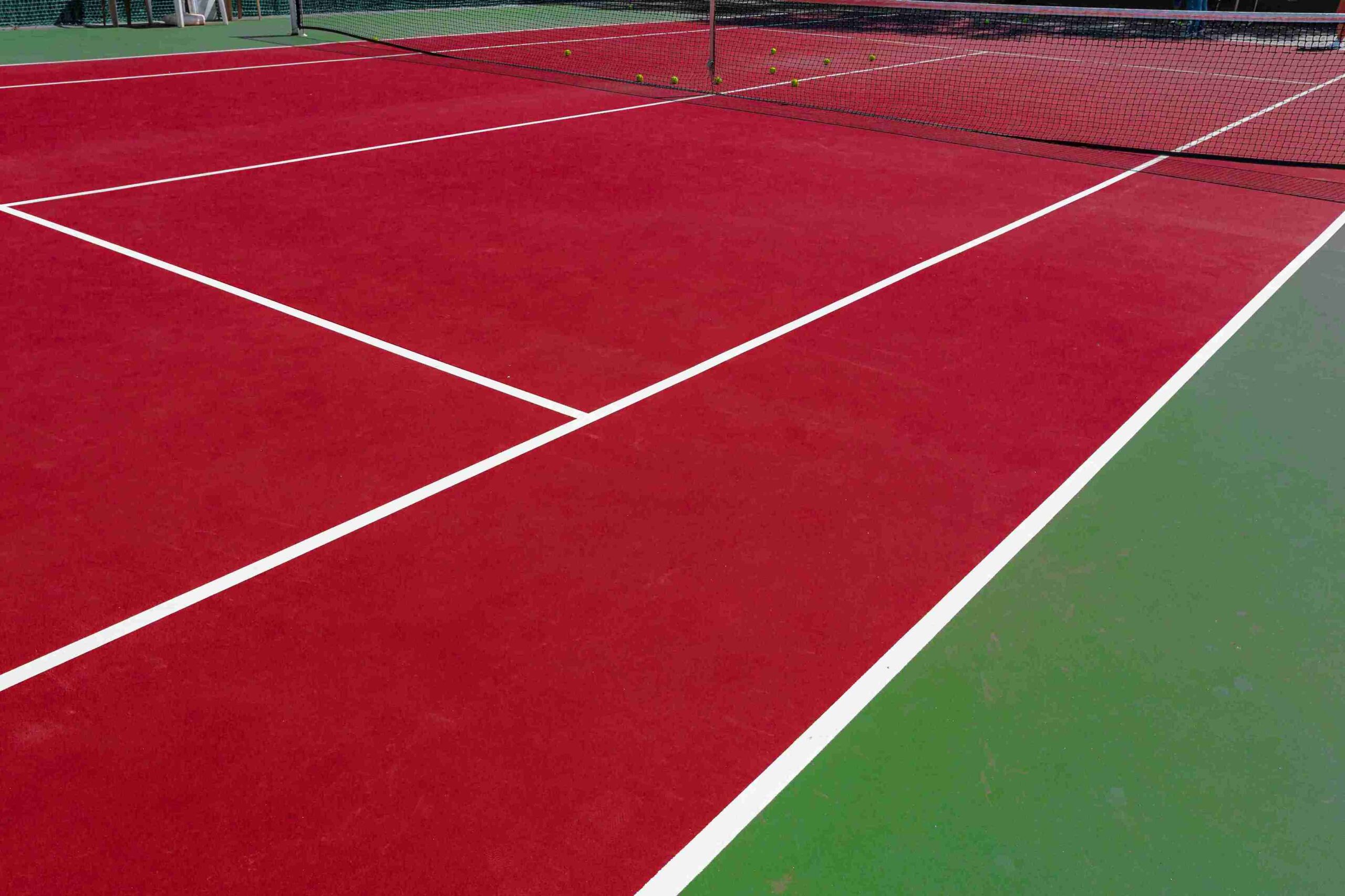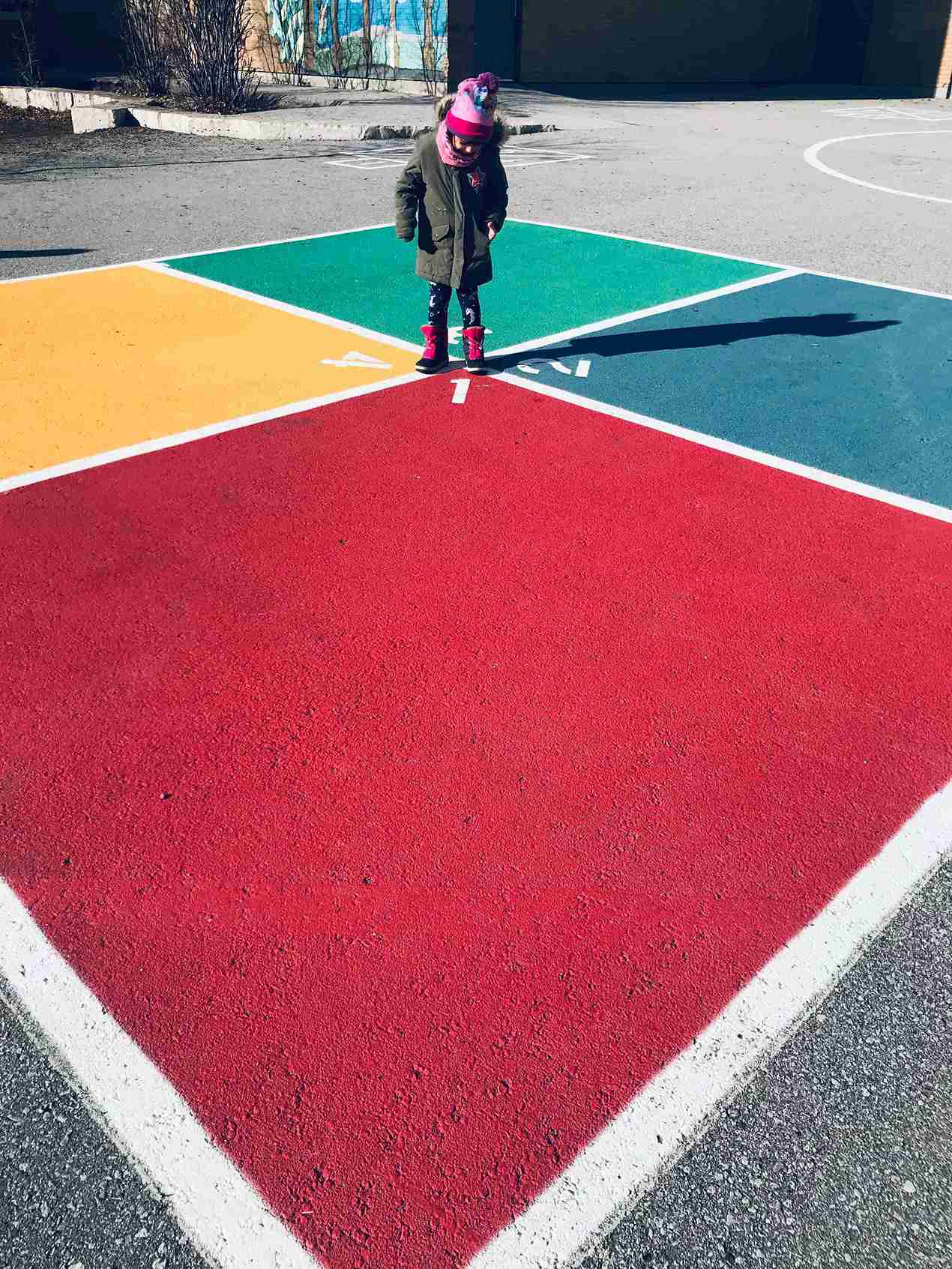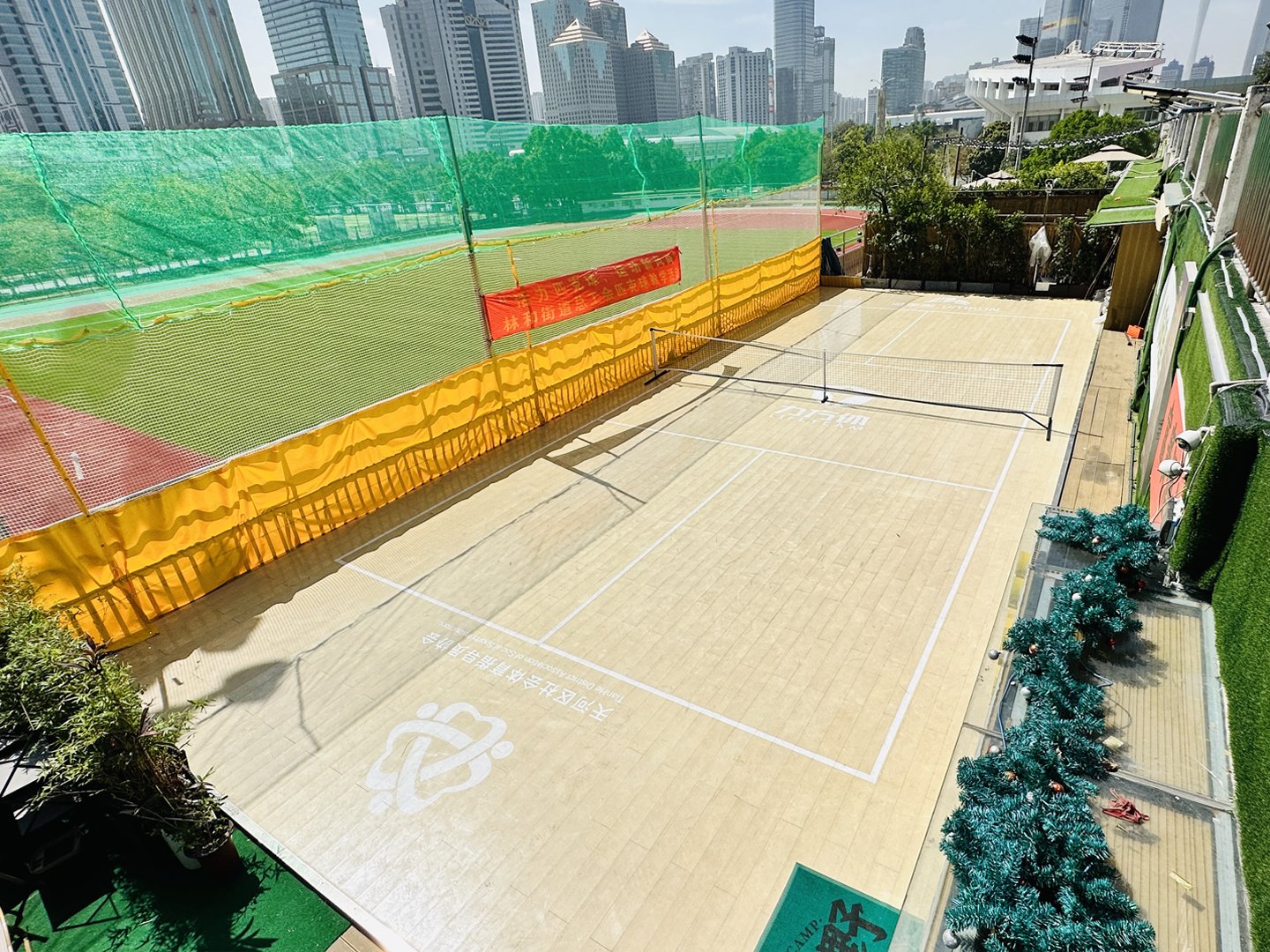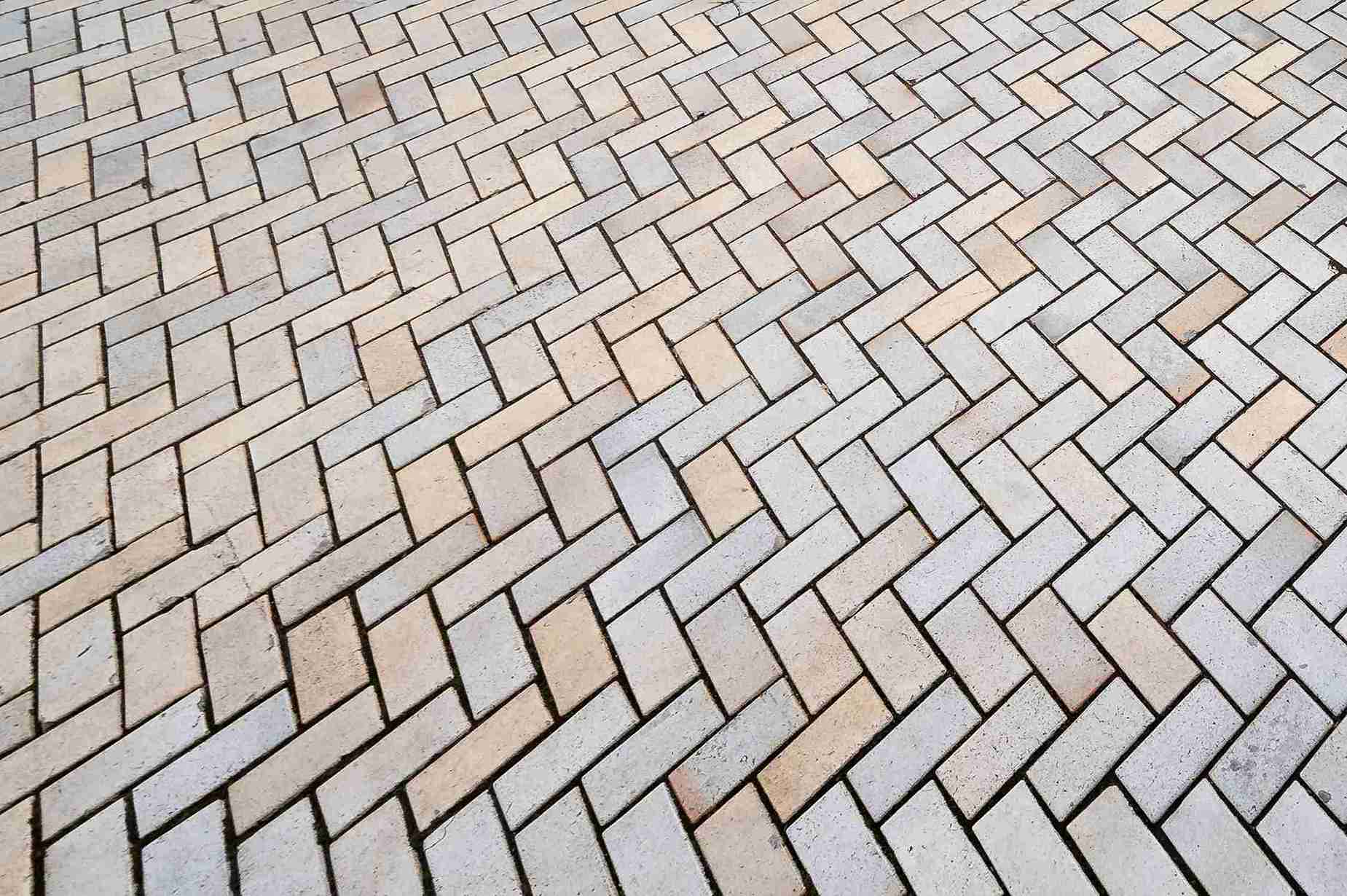If you run a sports center, you already understand that the cost of maintaining floors is one of the largest ongoing expenses. From hardwood basketball courts to rubber gym flooring, it’s a constant, time-consuming, and costly process. And when your facility is down due to a cleaning or a repair? That’s money down the drain.
But think about if you could cut those maintenance costs — not in two, but by a lot — without sacrificing performance or safety?
That is exactly what sports interlock floors are designed to accomplish.
Here in this article, we’ll discuss how these modular systems work, why they’re so popular, and how they can end up saving your venue thousands of dollars in the long run. Let’s start with the basics.
What are Sports Interlock Floors and Why are They so Well-Loved?
Sports interlock floors consist of durable interlocking tiles that fit together like a puzzle to form a smooth, professional sports surface. In contrast to traditional flooring systems that need to be glued, nailed, or installed with heavy machinery, interlocking floors can be installed over most existing surfaces — even concrete or worn-out flooring.
They are built with long-lasting materials like polypropylene, which is well known for being weatherproof, long-lasting, and wear-resistant.
But they’re attractive aside from how they’re made.
Quick to install, simple to clean, and durable enough to withstand regular use, sports interlock floors are now the default choice for schools, recreation facilities, and even professional sports complexes.
Then why are so many venue owners switching?
To address that, we will look into the actual price of traditional sports flooring more in depth below.
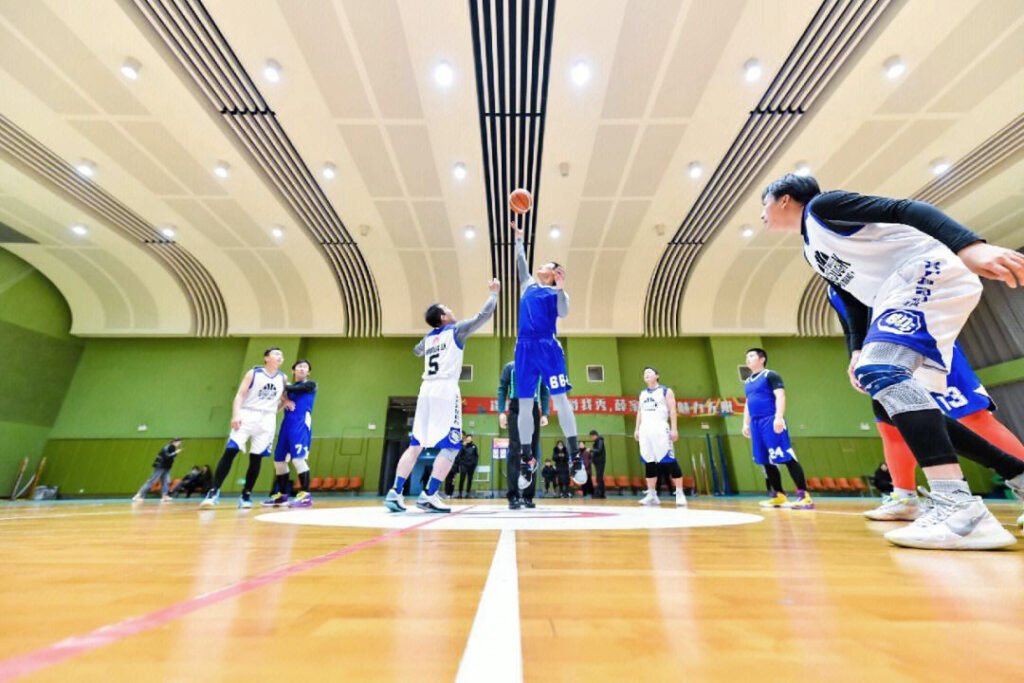

The High Cost of Maintaining Traditional Sports Floors
Maintaining a clean sports floor is more than just mopping up after games. Depending on the flooring your facility has, you may have an entire inventory of maintenance activities — each with a cost.
For example, hardwood floors (common to basketball gyms) will often have to be sanded, sealed, and refinished every few years. This can be thousands of dollars and can put the court out of use for days or weeks.
Rubber flooring, which is widely used in multi-purpose gyms and fitness clubs, also requires frequent cleaning and might have to be recoated occasionally. And if it is left in the sun or in damp conditions, it can deteriorate very fast.
Vinyl decks need to be waxed and stripped to maintain them in good condition and give a good grip. That’s additional chemicals, additional labor, and additional downtime.
So what does that look like in numbers?
- Wood floor maintenance: $3-$5 per square foot, annually
- Rubber: $2–$3 per square foot annually
- Vinyl: Approximately $1.50 per square foot per year
And in 5 or 10 years, it adds up quick.
So, what’s the better, low-maintenance option? You guessed it.
How Sports Interlock Floors Can Save You Maintenance Costs
Sports interlock floors are designed specifically to address just these issues.
Because they contain no polish, nails, or adhesive, they never require waxing, refinishing, or resurfacing. The surface is always strong and smooth with only regular cleaning — no chemicals or special machinery needed. A mop and gentle soap will usually suffice.
Another enormous advantage? If ever a tile is broken, you don’t need to have the entire floor replaced. Simply remove the broken tile and snap in a fresh one. It takes minutes, not the headache of hiring a contractor or shutting off the room.
Let’s dissect a couple more of the most important maintenance-saving features:
- No sealing or coating required
- Water and UV resistance, suitable for use outside
- Low maintenance — dirt and grime do not stick as much
- Intrinsic drainage design, i.e., water never stands on the surface.
The Figures Behind the Savings
Let’s say you have a 10,000 sq. ft. sports facility. With the old floors, you may be paying $30,000–$50,000 per year in maintenance. Ten years and that’s nearly half a million dollars — just to keep the floor up.
By converting to sports interlock floors, most centers save 50–70% of those costs. That’s over $250,000 in ten years — enough to buy new equipment, extra programming, or facility improvements.
And the best news of all: less downtime. Your building can remain open and occupied more often — which translates to more income, quicker ROI.
But the benefits of interlocking floors don’t stop at cost-saving alone.
Other than Savings — Other Benefits of Sports Interlock Floors
Yes, cost savings are a big plus. But why sports interlock floors are a smart investment is that they check so many other boxes.
First, let’s talk about safety.
They’re designed to deliver just the right amount of cushioning and grip. That means fewer slips, less joint impact, and less chance of injury — all big considerations regardless of whether you’re outfitting a school gym or pro arena.
And then there’s longevity. Interlock floors are durable enough for year-round usage. Most models are UV-stabilized, water-proof, and can withstand anything from cleats to wheelchairs.
Want something that also looks great? You can insert colors and logos right into the tile design — no painting necessary. And with quick installation, you won’t need to close down your venue for days.
So if it’s a matter of whether or not these advantages are reserved for high-end facilities, it’s not. Interlock floors are now being used in:
- School gyms
- Outside basketball courts
- Futsal stadiums
- Multi-sport facilities
- Community centers
And the bonus point? They can be relocated or expanded, so they’re a flexible, long-term solution.
Now let’s shift the conversation to a more tangible question — why VMKON?
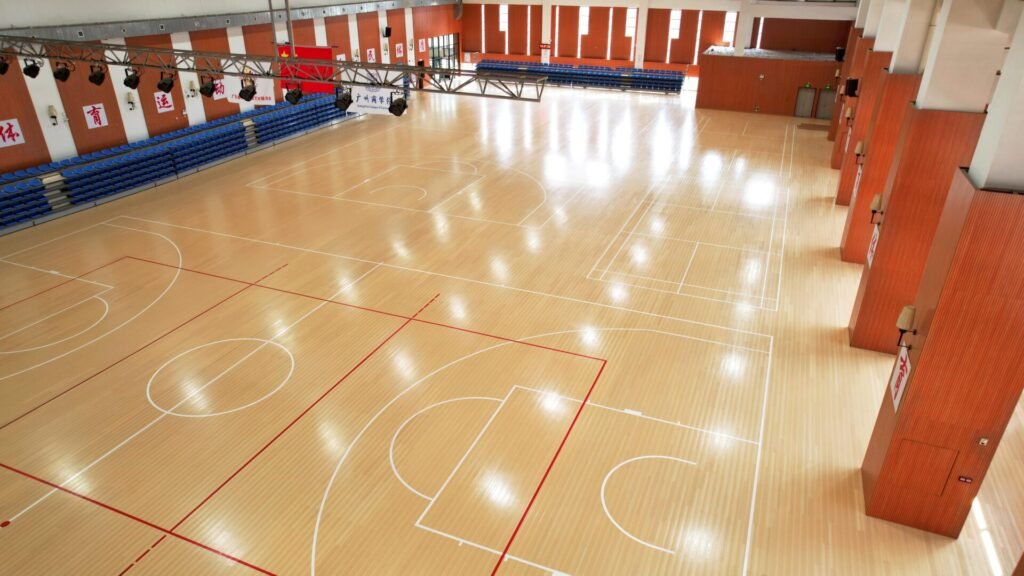

Why Choose VMKON for Sports Interlock Floors?
With sports interlocking floors, we’re not merely a distributor. We’re the manufacturer — and so we have the quality, the innovation, and the support at our fingertips.
Our floors are made of top-of-the-line, athlete-proven materials and are FIBA, BWF, and other top organizations certified. That’s not a hardwood surface you’re getting — it’s a system with international performance standards.
- Here is why VMKON stands out:
- All weather resistance – warping, fading, or cracking none
- Shock absorption & anti-slip structure – safer for players
- Branded features – make your court stand out
- Proactive customer service – from planning through post-install care
Whether you’re building a new sports facility or renovating an existing one, VMKON delivers performance, beauty, and value — in one system.
Conclusion
When every square foot matters, sports interlock floors are leveling the playing field. They’re durable, safe, and long-lasting — and the best part, they’ll save you a fortune on upkeep.
With less downtime, fewer repairs, and greater flexibility, these floors not only pay for themselves — they make your venue thrive.
Then, if you are willing to cut your costs, enhance your facility’s performance, and have a staff member who knows sports backwards and forwards.
Let’s begin. Contact VMKON today for expert guidance or a no-obligation quote. We’ll guide you to the best solution — quickly, intelligently, and with long-term value.
FAQs
1. What is sports interlock flooring made of?
They are typically constructed from long-lasting polypropylene or other heavy-duty plastic substances intended for heavy-duty use and harsh environments.
2. Are interlock sports floors suitable for indoor and outdoor applications?
In fact! These floors are UV-stable and weather-resistant, and therefore ideal for indoor courts and outdoor play courts.
3. How long do sports interlock floors last?
They can last 10–15 years or more under regular maintenance, even with continuous usage.
4. Are sport interlock floors easy to install?
Yes. They also mostly snap together with no glue or tools and can be mounted over existing flooring or surfaces like concrete.
5. Do I need any special equipment to clean them?
No. A mop, broom, or mild detergent is usually all you will need for basic cleaning.
6. Are individual tiles replaceable if they are damaged?
In fact, one of the best things about this is, of course, you can simply replace the damaged tile, not the entire floor.
7. Are they safe for use in sports?
Yes. Sports interlock floors have shock absorption, traction, and injury prevention characteristics ideal for sports use.
8. How do the floors minimize maintenance costs?
They don’t require polishing, waxing, or sealing — and spoiled tiles can be replaced readily. That equates to fewer repairs and less downtime.
9. Can I personalize the colors or layout?
Yes! VMKON comes in customizable colors and logo options to match your branding or team identity.
10. Why use VMKON for sports interlock floors?
Being a manufacturer, VMKON provides premium materials, guaranteed performance, quick installation, and full support — all at competitive costs.


